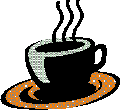
 |
Topics |
 |
 |
Instructor: Ed Quigley 724.774.2088 |
We live in a designed world.
Requirements tell what happens, Design tells how it is made to happen.
Artifacts are the things we design and make.
The first artifacts amplified brute human/animal power: the
lever, the pulley, the inclined plane, the screw, the wheel-and-axle.
Renaissance artifacts were the clock and the printing press.
Industrial Rev. artifacts harnessed inanimate power (coal, oil, water) to control simple machines
The newest artifacts control complex systems that humans cannot.
If we could rid ourselves of all pride, if, to define our species, we kept strictly to what the historic and pre-historic periods show us to be the constant characteristic of man and of intelligence, we should not say homo sapiens but homo faber. In short, intelligence considered in what seems to be its original feature, is the faculty of manufacturing artificial objects, especially tools for making tools.
Henri Bergson, Creative Evolution
Bergson's notion of homo faber conflicts with those who see man as a user of symbols
Clarity is the perception of sensibility and reasonableness in communicative style. Information is expressed in a straight-forward manner. Using white space, formattting standards, integrating text and appropriate images, and placing navigational aids support clarity.
Harmony is the perception of how things look in a holistic manner. This ought to be subtle. Content (text and images) need to be balanced. Balance means physical symmetry on the screen.
Integrity is the perception that the information is complete, and contributes to the style of the presentation.
Just as in nature systems of order govern the growth and structure of animate and inanimate matter, so human acitivity itself has, since the earliest times, been disntinguished by the quest for order.
Josef Muller-Brockman, The Graphic Designer and His Design Problems
To design is to plan,to order, to relate, and to control. In short, it opposes all means of disorder and error.
Emil Ruder, Typography
To Design is much more than simply to assemble, to order, or even to edit; it is to add value and meaning, to illuminate, to simplify, to clarify, to modify, to dignify, to dramatize, to persuade, and perhaps even to amuse.
Paul Rand, Design, Form, and Chaos
What is simple should be treated simply, What is difficult should be reduced to the simplest terms
Josef Muller-Brockman, The Graphic Designer and His Design Problems
Maximum Meaning, Minimum Means. Abram Games.
In anything at all, perfection is finally attained not when there is no longer anything to add, but when there is no longer anything to take away.
Antoine de Saint Expury
Let's say the mission is to destroy up an enemy command center.
 Elegance in design is seen in the immediately obvious success of a novel approach that solves a problem completely yet in a highly economical way.
Example: Road signs are an excellent
example of several design issues: they must communicate
complex, life-critical messages in a single unambiguous
symbol. The audience will be speeding past the sign in
a high-distraction environment. (See Assignment.)
Semiotics is the study of symbols.
Elegance in design is seen in the immediately obvious success of a novel approach that solves a problem completely yet in a highly economical way.
Example: Road signs are an excellent
example of several design issues: they must communicate
complex, life-critical messages in a single unambiguous
symbol. The audience will be speeding past the sign in
a high-distraction environment. (See Assignment.)
Semiotics is the study of symbols.
Some space must be narrow so that other space may be wide, and some space must be emptied so that other space may be filled.
Robert Bringhurst,The Elements of Typographic Style
To describe the problem is part of the solution. This implies not to make creative decisions as prompted by feeling but by intellectual criteria. The more exact and complete these criteria are, the more creative the work becomes.
Karl Gerstner, Designing Programmes
 bad mapping |  good mapping |
Another main point is a re-iterative technique of design, testing, improvement, and retesting. This is a design fountain as opposed to a design waterfall.
 |
 |
 |
 |